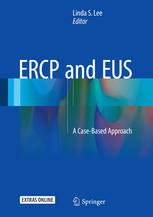ERCP and EUS: A Case-Based Approach 2015
دانلود کتاب پزشکی ERCP و EUS: یک رویکرد مبتنی بر مورد
| نویسنده |
Linda S. Lee |
|---|
| تعداد صفحهها |
592 |
|---|---|
| نوع فایل |
|
| حجم |
38 Mb |
| سال انتشار |
2015 |
89,000 تومان
فصلهای EUS طیف وسیعی از تجهیزات موجود برای عملکرد EUS و EUS-FNA را بررسی میکنند، جزئیات فناوری عملکرد EUS-FNA را بررسی میکنند و مسائل مربوط به آموزش و ارزیابی شایستگی مشابه آموزش ERCP را بررسی میکنند. بینش های ارزشمند در مورد اصول سیتوپاتولوژی مربوط به متخصص غدد خلاصه شده است. اندیکاسیون کلاسیک EUS در مرحلهبندی کارسینوم مجرا به تفصیل مورد بررسی قرار میگیرد در حالی که نشانههای لوزالمعده و مجاری صفراوی با برجسته کردن آخرین فناوریهای کمکی از جمله تصویربرداری انعطافپذیر و EUS با کنتراست مورد بحث قرار میگیرد. اگرچه در مراحل ابتدایی خود، دنیای جدید و شجاع EUS درمانی با تاکید بر نکروتومی لاپاروسکوپی، دسترسی هدایت شده توسط EUS به مجاری صفراوی و پانکراس، و همچنین پتانسیل هیجان انگیز فرسایش فرکانس رادیویی هدایت شده توسط EUS و تزریق عوامل ضد تومور در حال بررسی است.
ERCP و EUS: یک رویکرد مبتنی بر مورد به عنوان یک منبع بسیار مفید برای پزشکانی که بیماران را برای ERCP و EUS انجام می دهند یا ارجاع می دهند، عمل می کند. خلاصه ای مختصر و جامع از وضعیت فعلی ERCP و EUS ارائه می دهد که به هدایت مدیریت بیمار و تحریک تحقیقات بالینی کمک می کند.
The EUS chapters review the breadth of equipment available for performing EUS and EUS-FNA, detail the technique of performing EUS-FNA, and explore pertinent issues with training and assessing competency analogous to ERCP training. Valuable insights on the basics of cytopathology relevant to the endosonographer are summarized. The classic indication for EUS of staging luminal cancers is examined in detail while pancreaticobiliary indications are discussed highlighting newer adjunctive technologies including elastography and contrast-enhanced EUS. Although in its infancy, the brave new world of therapeutic EUS is explored with a focus on endoscopic necrosectomy, EUS-guided biliary and pancreatic access as well as the exciting possibilities of EUS-guided radiofrequency ablation and injection of anti-tumor agents.
ERCP and EUS: A Case Based Approach will serve as a very useful resource for physicians who perform or refer patients for ERCP and EUS. It provides a concise yet comprehensive summary of the current status of ERCP and EUS that will help guide patient management and stimulate clinical research.




